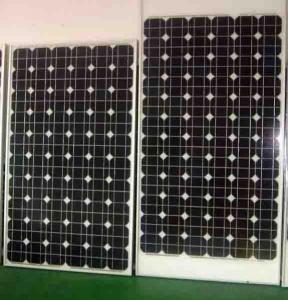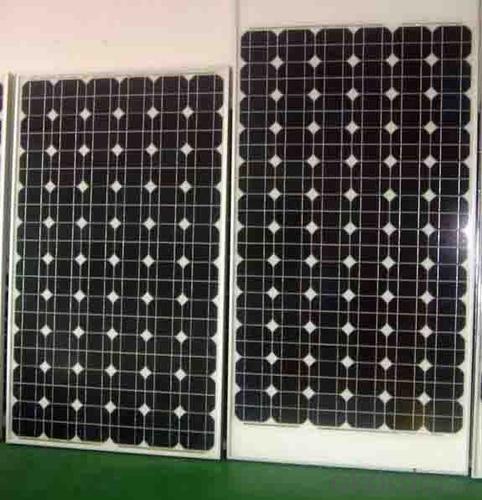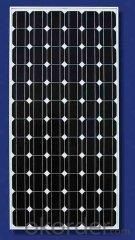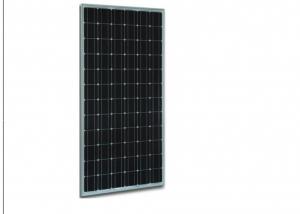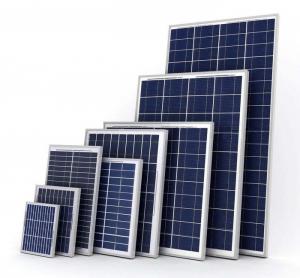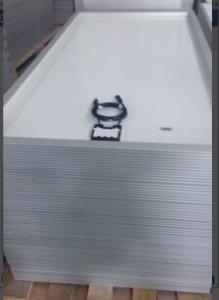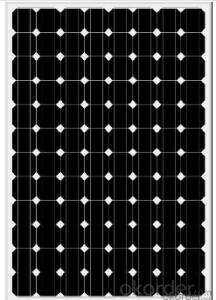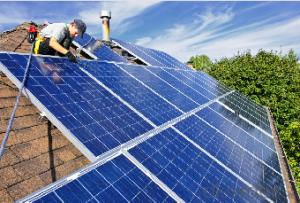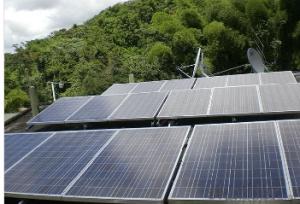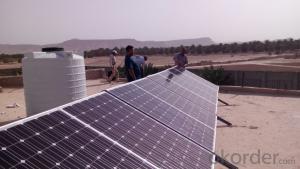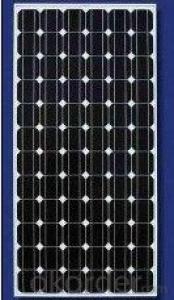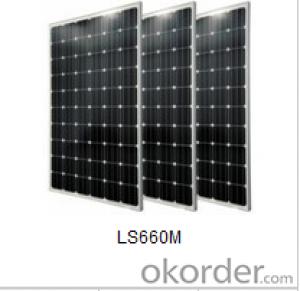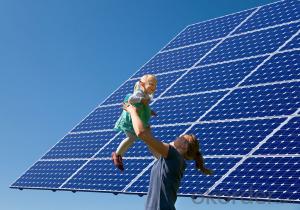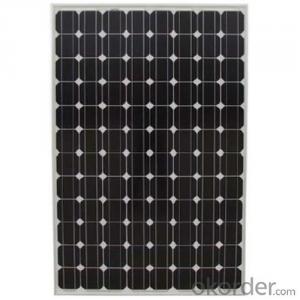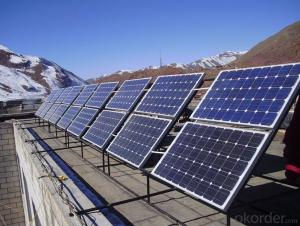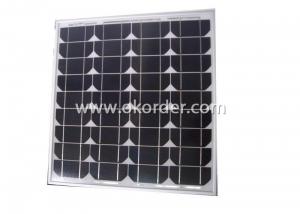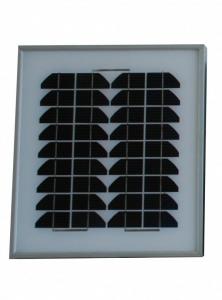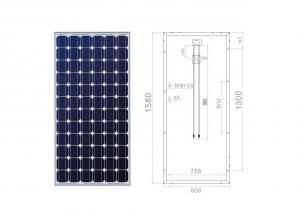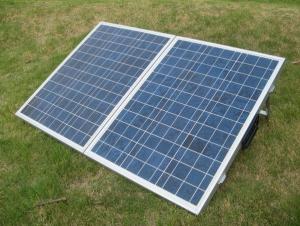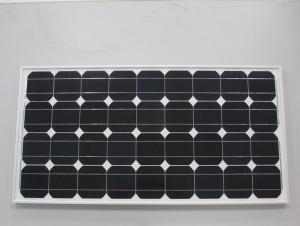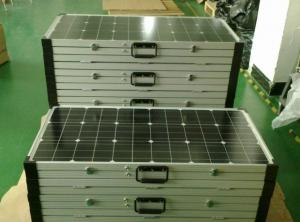Fuji Solar Panels Monocrystalline Silicon Solar Panel (235W)
- Loading Port:
- China main port
- Payment Terms:
- TT OR LC
- Min Order Qty:
- 10000 watt
- Supply Capability:
- 100000 watt/month
OKorder Service Pledge
OKorder Financial Service
You Might Also Like
Structure
Mono-Crystalline solar panel, Poly 156 cell, 60pcs.
Power range 220W.
Quality and Safety
1. Rigorous quality control meets the highest international standards.
2. High-transmissivity low-iron tempered glass, strong aluminium frame.
3. Using UV-resistant silicon.
4. IS09001/14001/CE/TUV/UL
Feature
Warranties
1. 10 years limited product warranty
2. 15 years at 90% of the minimal rated power output
3. 25 years at 80% of the minimal rated power output
Images
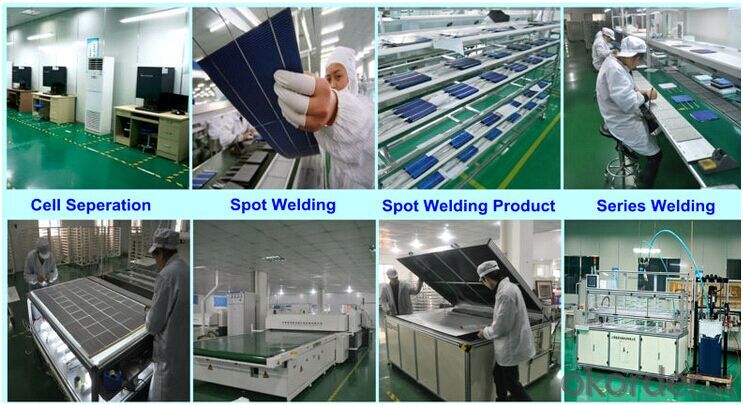
Specification
Technical date
ITEM NO.: | Poly 156*156 cell ,60pcs . Power range from 230Wp-260Wp | ||||||
Maximum Power(W) | 230 | 235 | 240 | 24 | 250 | 255 | 260 |
Optimum Power Voltage(Vmp) | 29.4 | 29.5 | 29.7 | 30.1 | 30.3 | 30.5 | 30.7 |
Optimum Operatige Current(Imp) | 7.83 | 7.97 | 8.08 | 8.14 | 8.25 | 8.37 | 8.48 |
Open Circuit Voltage(Voc) | 36.7 | 36.8 | 36.9 | 37.1 | 37.3 | 37.5 | 37.7 |
Short Circuit Current(Isc) | 8.52 | 8.59 | 8.62 | 8.65 | 8.69 | 8.73 | 8.78 |
Solar Cell: | 156*156 Poly | ||||||
Number of Cell(pcs) | 6*10 | ||||||
Brand Name of Solar Cells | JA Cell, Bluesun Cell | ||||||
Size of Module(mm) | 1650*992*40/45/50 | ||||||
Cable & Connector Type | Pass the TUV Certificate | ||||||
Frame(Material Corners,etc.) | Aluminium-alloy | ||||||
Back sheet | TPT | ||||||
Weight Per Piece(KG) | 19.5KG | ||||||
FF (%) | 70-76% | ||||||
Junction Box Type | Pass the TUV Certificate | ||||||
Tolerance Wattage(e.g.+/-5%) | ±3%, or 0-3% | ||||||
Front Glass Thickness(mm) | 3.2 | ||||||
Temperature Coefficients of Isc(%) | +0.04 | ||||||
Temperature Coefficients of Voc(%) | -0.38 | ||||||
Temperature Coefficients of Pm(%) | -0.47 | ||||||
Temperature Coefficients of Im(%) | +0.04 | ||||||
Temperature Coefficients of Vm(%) | -0.38 | ||||||
Temperature Range | -40°C to +85°C | ||||||
Surface Maximum Load Capacity | 5400Pa | ||||||
Allowable Hail Load | 23m/s ,7.53g | ||||||
Bypass Diode Rating(A) | 12 | ||||||
Warranty | 90% of 10 years, 80% of 25 years. | ||||||
Standard Test Conditions | AM1.5 1000W/ 25 +/-2°C | ||||||
Packing | carton or pallet | ||||||
1*20' | 14 Pallets / 316pc | ||||||
1*40'STD | 25 Pallets / 700pcs | ||||||
FAQ
1. Q: Are you a factory or trading company?
A: We are a factory.
2. Q: Where is your factory located? How can I visit there?
A: Our factory is located in Huzhou, Zhejiang, China, near Shanghai. You are warmly welcomed to visit us!
3. Q: Can the price be cheaper?
A: Of course, you will be offered a good discount for big amount.
- Q: Are there any health risks associated with solar panels?
- There are no direct health risks associated with solar panels. However, improper installation or maintenance may pose electrical hazards, and exposure to high temperatures or falling from heights during installation can lead to accidents. Additionally, some solar panels contain small amounts of hazardous materials, but they are tightly sealed and the risk of exposure is minimal. Overall, when installed and maintained correctly, solar panels are safe and have numerous environmental and health benefits.
- Q: Didnt solar panels use to cost around $250,000 5 years ago?
- For just 5 years ago, certainly not! Perhaps you are thinking of 50 years ago, the kind that was put on the early communication satellites? 5 years ago, there was a glut of polysilicon, so modules were actually a little cheaper than today. Solar cell makers were basically using the scraps thrown away by chipmakers. But today, more silicon goes into making solar cells than computer chips, so that bonanza is gone. We will see prices going lower this year, possibly 20% from last year, because of improvements in technology, but also an increase in polysilicon supply, and a slowdown in demand due to worldwide recession. Later this year is a good time to buy panels, if you have the cash. The industry site below tracks module prices. They used to have more data, but I guess the old data rolls off the screen with time. If you want to see the details, they'll charge you for the report.
- Q: Can solar panels be installed on a garage or carport?
- Yes, solar panels can be installed on a garage or carport. These structures often provide ample space and a suitable angle for solar panel installation, allowing homeowners to generate clean and renewable energy while utilizing the available space efficiently. Installing solar panels on a garage or carport can also provide additional benefits such as shade for vehicles, reduced utility bills, and the opportunity to contribute to a greener environment.
- Q: Can solar panels be used for heating water?
- Yes, solar panels can be used to heat water through the use of solar thermal systems. These systems utilize the sun's energy to heat water directly, providing a sustainable and cost-effective alternative to traditional water heating methods.
- Q: I want to buy a solar panel to charge deep cycle batteries and charge electronics off the DCB. I don't know how to wire everything up though or what materials ill need. Inverter? Gauge of the wire? Ampmeter?
- It does not matter if you father is a electrician he must be a fully qualified solar installer or you will not receive any money from the government. You need more than just solar panels you need regulators, grid interaction devices and array controller. 5KW installation is large and will cost around $5000 for the panels then around 5000 for controllers and equipment needed and then there are the basic materials such as rails, junctions, cables etc Total cost is approx $5,000
- Q: How much space do I need for solar panels?
- The amount of space needed for solar panels varies depending on the size and capacity of the panels. On average, a typical residential solar panel system requires about 100-400 square feet of roof space, but it can also be installed in a backyard or ground-mounted depending on available space. It is best to consult with a solar installation professional who can assess your specific needs and determine the exact space requirements for your solar panels.
- Q: Alright my family and i are buying a new home in Bradford,Ontario, we we thinking about solar panels and had a couple questions:. how much are they each?2. how many will we need to power a single family home(4 ppl)3. where can we find them in ontario?4.how much money do they really save you?5.what kind of energy do they providfe you withand other basic info or a website i can check out would be great!thanks in advance!
- the first person is absolutely wrong. A 200 watt panel is $000US. By the time you buy mounting systems, wire, inverters, electric panels, interconnects, labor and permits/inspections, the cost is about $7/watt. if you use 700 kw-hr (please look at the units, you use kw-hr NOT kw) per month that 24 kw-hr per day. in your area, a pv system will supply about 4 hours at peak production of the panels, so you will need 6kw in panels, that's about 30 panel or $42,000 in equipment.
- Q: Can solar panels be damaged by hail or other weather conditions?
- Yes, solar panels can be damaged by hail or other severe weather conditions. Hailstorms can cause physical damage to the panels, resulting in cracks or breakages. Additionally, extreme weather conditions like heavy snowfall or strong winds can also potentially harm the panels. However, modern solar panels are designed to withstand various weather conditions to a certain extent, and many manufacturers offer warranties that cover such damages.
- Q: I have a solar panel that puts out 00v, .5 amps in full sun. Before I thought it would charge a 2v battery without a solar charger but then I talked to someone and they said that it was wasting a lot of power and could potentially hurt the battery. A second part to this question is what happens if I put it on a 72v battery without a controller. Thanks!
- The solar panel is capable of /2 Amp output. If you hook it to a 2V battery directly and the battery is discharged it will want more than /2 Amp and pull the voltage down until the battery is charged to a certain level. Eventually the battery will try to charge up to 00V which will definitely damage the battery. If you use a regulator circuit running off the solar panel that outputs 2V then you will have a constant voltage circuit which will still be limited to /2A or whatever the regulator is capable of outputting. Of course you can't just go out and connect 00V to any voltage regulator it has to be capable of running from 00V and dropping the voltage to 2V like the original charger that comes with the battery. The same explanation applies to a 72V battery. You have to limit the output voltage to 72V or risk overcharging the battery.
- Q: Just curious.
- Solar panels are built with light-sensitive panels. These panels soak up the energy from the sun's light. This energy is changed to electric power. This power is stored in batteries to use whenever / wherever it is needed.
Send your message to us
Fuji Solar Panels Monocrystalline Silicon Solar Panel (235W)
- Loading Port:
- China main port
- Payment Terms:
- TT OR LC
- Min Order Qty:
- 10000 watt
- Supply Capability:
- 100000 watt/month
OKorder Service Pledge
OKorder Financial Service
Similar products
Hot products
Hot Searches
Related keywords
